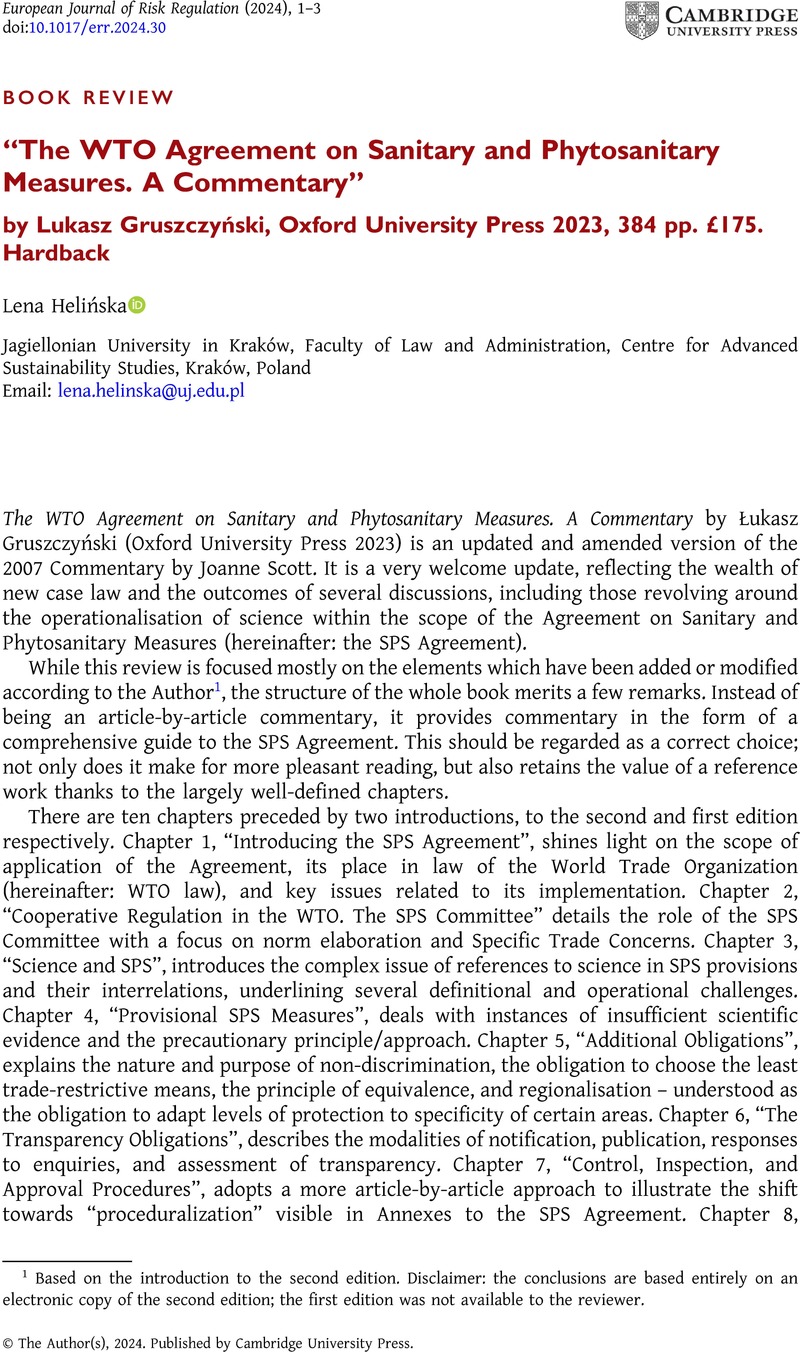No CrossRef data available.
Article contents
“The WTO Agreement on Sanitary and Phytosanitary Measures. A Commentary” by Lukasz Gruszczyński, Oxford University Press 2023, 384 pp. £175. Hardback
Review products
“The WTO Agreement on Sanitary and Phytosanitary Measures. A Commentary” by Lukasz Gruszczyński, Oxford University Press 2023, 384 pp. £175. Hardback
Published online by Cambridge University Press: 15 May 2024
Abstract
An abstract is not available for this content so a preview has been provided. Please use the Get access link above for information on how to access this content.

Information
- Type
- Book Review
- Information
- European Journal of Risk Regulation , Volume 15 , Special Issue 3: Special Issue on the Evolving Nature of the Rule of Law in International Economic Law , September 2024 , pp. 777 - 779
- Copyright
- © The Author(s), 2024. Published by Cambridge University Press
References
1 Based on the introduction to the second edition. Disclaimer: the conclusions are based entirely on an electronic copy of the second edition; the first edition was not available to the reviewer.

